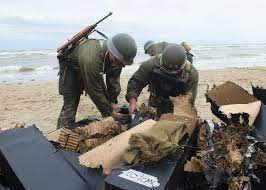The Navy SEAL Teams were created in 1962 by President John F. Kennedy, who as a commander of a small patrol torpedo boat in World War II had seen the outsized value of small units in big fights and understood, as one early SEAL put it, “that a well-trained David can kick Goliath in the balls.” SEAL stood for “Sea, Air, and Land” and represented all the capabilities of the new force. The Navy wanted commando troops able to strike underwater, on the beaches, or from the air. They wanted small, independent teams smart and flexible enough to blow up bridges, cut communication lines, train resistance fighters, and assassinate foreign targets, then slip away unnoticed. They needed to be able to adapt and react with almost no oversight as conditions changed, so the Navy gave them a level of independence unheard of in the rest of the force. In the Navy’s fleet of ship drivers and jet pilots, there was only one group that seemed suited for such a dangerous and physically demanding mission: the UDTs, or Underwater Demolition Teams—the original Navy frogmen.
Twenty years earlier, at the onset of World War II, the American military realized that defeating the Nazis and the Japanese would depend on making a series of successful amphibious invasions, but many of the critical landing beaches bristled with mines and massive iron obstacles scattered on the sand like jacks to keep Allied ships from hitting shore. Other beaches, especially in the Pacific, were guarded by coral reefs.
The Allies learned early that they could have the best ships and the best troops, but if they couldn’t land and seize critical ground, they had nothing. In one early battle in the Pacific, on the island of Tarawa, Marines trying to land hit an unseen reef hundreds of yards from shore. Under withering fire, men laden with heavy equipment jumped into the water. Some immediately sank and drowned, others were mowed down by Japanese machine guns as they tried to wade in. More than a thousand Marines were killed trying to take the tiny island, another two thousand were wounded.
In desperation, the Navy created the Underwater Demolition Teams. The UDTs’ mission was to swim silently to beaches before amphibious landings, chart the depths, defuse mines, and blow up obstacles by hand to clear the way. The work was basic but harrowing. Sailors had to swim hundreds of yards to shore, often under fire, using only primitive swim fins and masks. They worked with simple plumb lines and slates for recording depths and satchels full of explosives for destroying obstacles. The frogman’s weapon of choice— his only weapon—was a fixed-blade knife. It was the only thing a diver could carry, and it was guaranteed never to jam or misfire. It became a symbol of the Teams. To this day, as a reminder of the frogman heritage, every new SEAL is given a ceremonial version of the same fixed-blade Navy knife that the frogmen carried.
Source : https://www.popsci.com/military/eddie-gallagher-alpha-excerpt/







